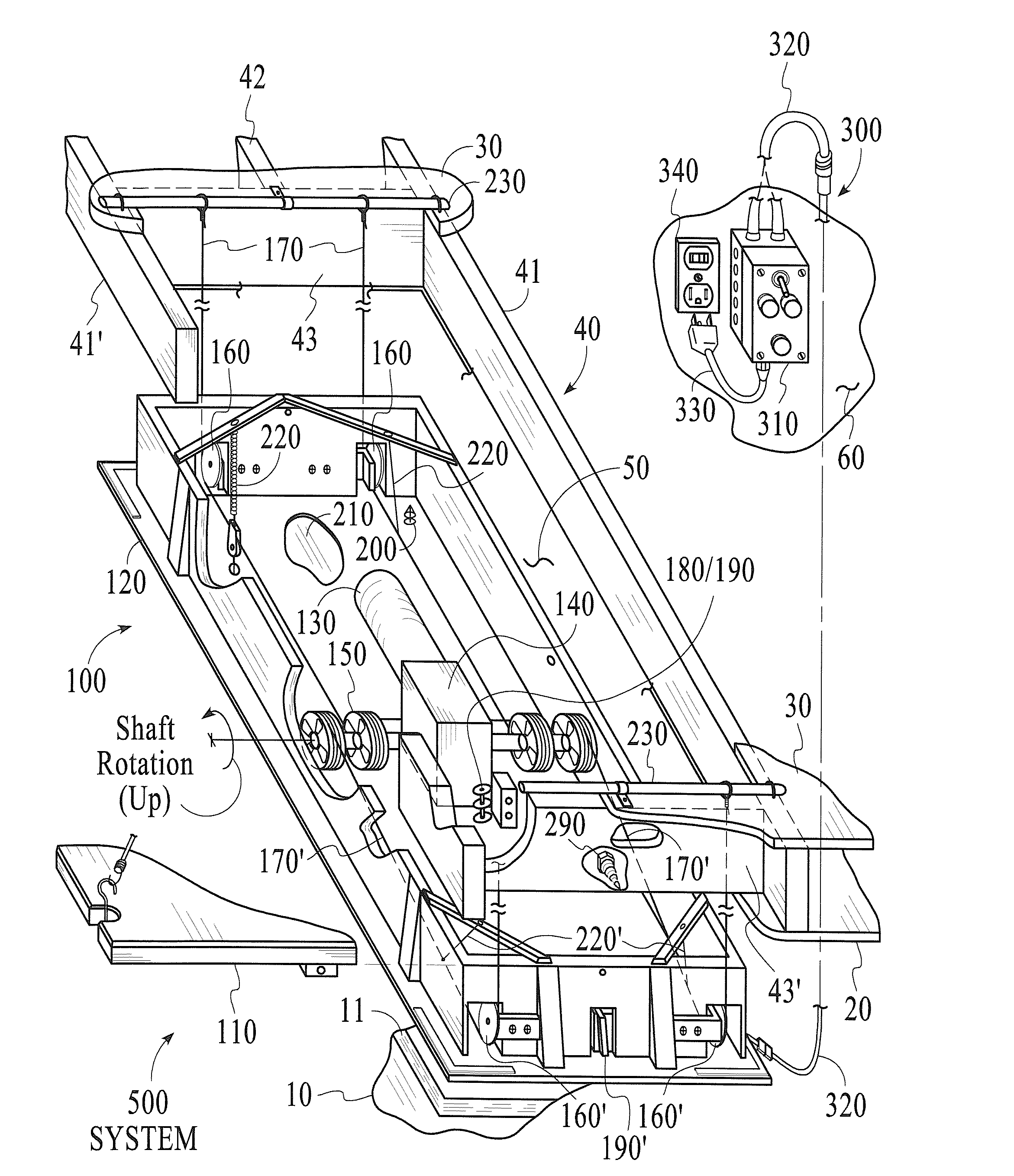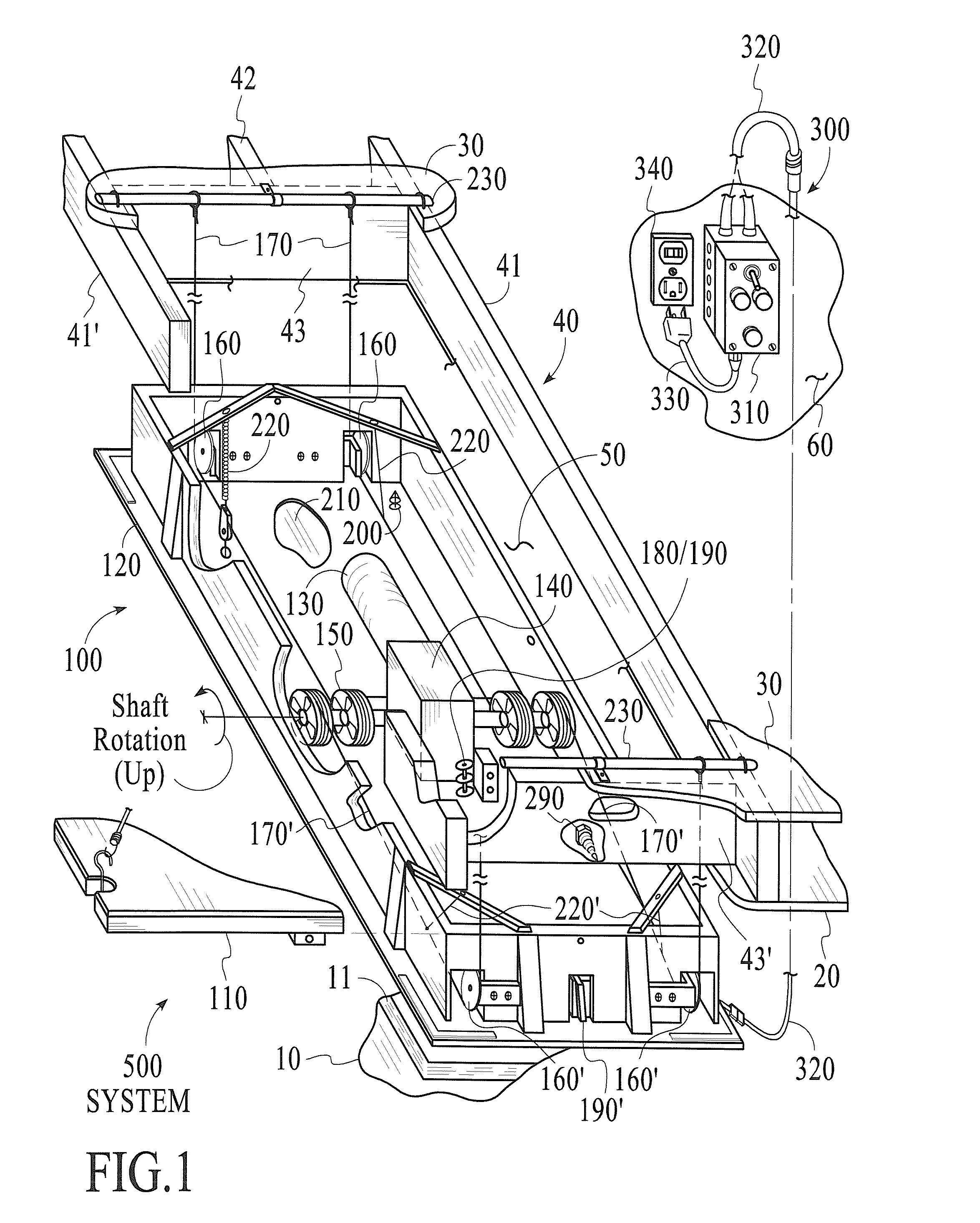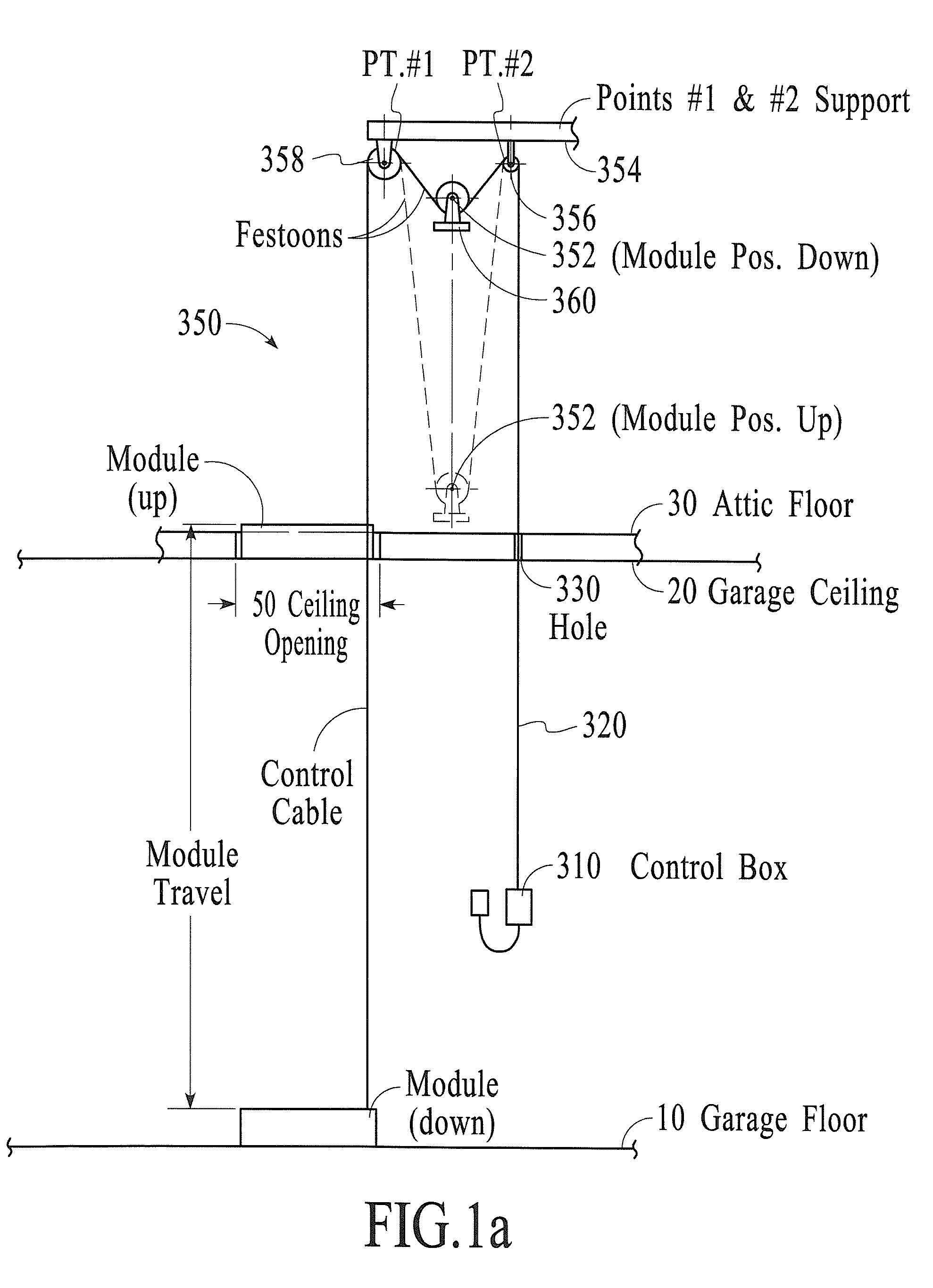Self-contained self-elevating platform lift
a self-elevating platform and self-elevating technology, which is applied in the direction of lifting equipment, curtain suspension devices, filing appliances, etc., can solve the problems of similar problems and objects are too heavy for a single person, and achieve the effects of easy and quick installation, simple design, and low cos
- Summary
- Abstract
- Description
- Claims
- Application Information
AI Technical Summary
Benefits of technology
Problems solved by technology
Method used
Image
Examples
Embodiment Construction
[0037]The isometric pictorial drawing of system 500 in FIG. 1 is presented to enable one quickly to view clearly the simplicity of lift module 100, showing a minimum number of parts to achieve the intended purpose of the invention. Module 100 includes platform 110, enclosure 120, and power lifting mechanism 130. Power mechanism 130 consists of gear-motor 140, single shaft and sheaves assembly 150, two pulley installations 160 and 160′, two lift line installations (hereinafter referred to as “wire cable installations”170 and 170′), lower travel limit installation 180 with lower limit switch installation 190, and upper travel limit installation with upper limit switch installation 190′ at one end of enclosure 120. Also related to the power lifting mechanism 130 of module 100 is the electrical system 300. It readily can be seen that the entire power lifting mechanism 130 is within the enclosure 120 and is covered by, and below, the platform 110. Therefore, the module 100 is self-contai...
PUM
 Login to View More
Login to View More Abstract
Description
Claims
Application Information
 Login to View More
Login to View More - R&D
- Intellectual Property
- Life Sciences
- Materials
- Tech Scout
- Unparalleled Data Quality
- Higher Quality Content
- 60% Fewer Hallucinations
Browse by: Latest US Patents, China's latest patents, Technical Efficacy Thesaurus, Application Domain, Technology Topic, Popular Technical Reports.
© 2025 PatSnap. All rights reserved.Legal|Privacy policy|Modern Slavery Act Transparency Statement|Sitemap|About US| Contact US: help@patsnap.com



